UNESCO World Heritage Sites Tour in Nepal is like stepping into a living museum, where ancient history and breathtaking natural beauty converge to create an unforgettable tapestry of experiences. Nestled amidst the majestic Himalayas, Nepal is a treasure trove of cultural and natural wonders recognized globally for their outstanding value to humanity. From the spiritual serenity of Lumbini, the birthplace of Lord Buddha, to the architectural marvels of the Kathmandu Valley, and the awe-inspiring landscapes of Sagarmatha National Park, each site offers a unique glimpse into the soul of this vibrant country. This introduction will guide you through the mystical alleyways of Nepal's heritage, inviting you to explore its sacred temples, towering peaks, and lush wildlife sanctuaries. Whether you are an avid historian, a nature lover, or a spiritual seeker, a UNESCO World Heritage Sites Tour in Nepal promises an enriching journey through the heart of the Himalayas, leaving you with memories that will last a lifetime. Join us as we unveil the secrets of Nepal's UNESCO crown jewels, a journey where every turn is a story, and every story is a piece of the eternal legacy of this remarkable land.
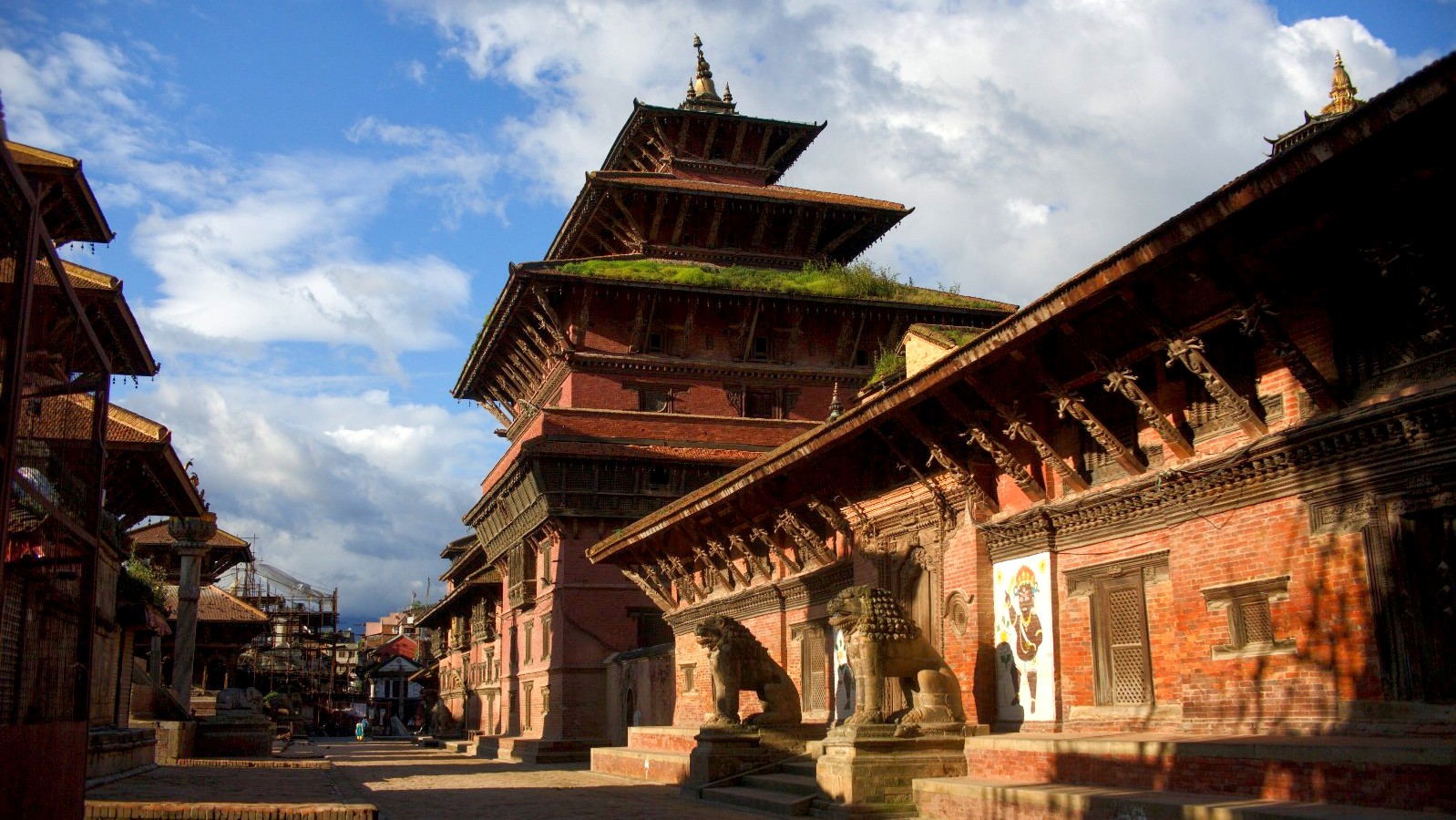
Luxury Holidays Nepal Pvt. Ltd. stands out as the top pick for travelers seeking an unforgettable journey through Nepal's UNESCO World Heritage Sites. With our deep understanding of Nepal's rich cultural and natural heritage, we ensure every guest experiences the majestic beauty and profound spirituality of places like the Kathmandu Valley, Lumbini, Sagarmatha National Park, and Chitwan National Park. Our commitment to providing seamless, high-quality service transforms a simple vacation into a luxurious adventure. Whether it's the architectural wonders of ancient temples or the natural splendor of the Himalayas, Luxury Holidays Nepal crafts personalized, memorable tours that resonate with the spirit of exploration and luxury.
Cultural Sites in Kathmandu Valley
The Kathmandu Valley, a melting pot of culture, religion, and history, is home to an impressive array of UNESCO World Heritage Cultural Sites. These sites are not just tourist attractions; they are living museums, each telling its own story of faith, art, and ancient traditions. Here’s a closer look at the cultural gems nestled within the Kathmandu Valley:
Kathmandu Durbar Square
At the heart of Kathmandu, this historic square is a showcase of medieval Nepalese architecture, with palaces, courtyards, and temples that date back to the Malla kings. The square was the royal Nepalese residence until the 19th century and continues to be a focal point for festivals, ceremonies, and the living goddess Kumari.
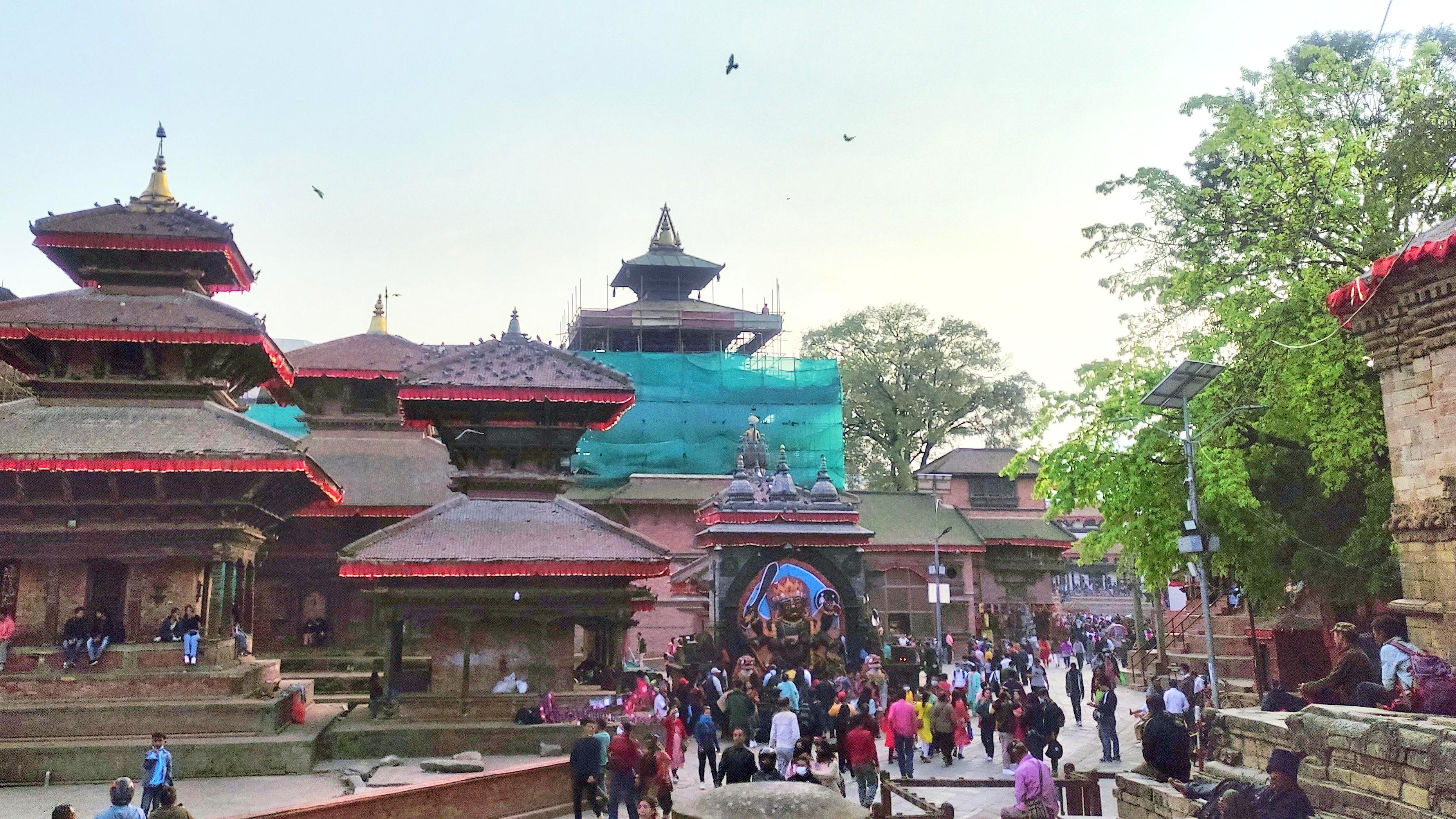
Patan Durbar Square
Located in Lalitpur, Patan Durbar Square is renowned for its exquisite craftsmanship. The square features a collection of ancient palaces, temples, and shrines, highlighted by the stunningly carved Sundari Chowk, Krishna Mandir, and the Patan Museum. The museum, in particular, offers insight into the rich cultural and artistic heritage of the valley.
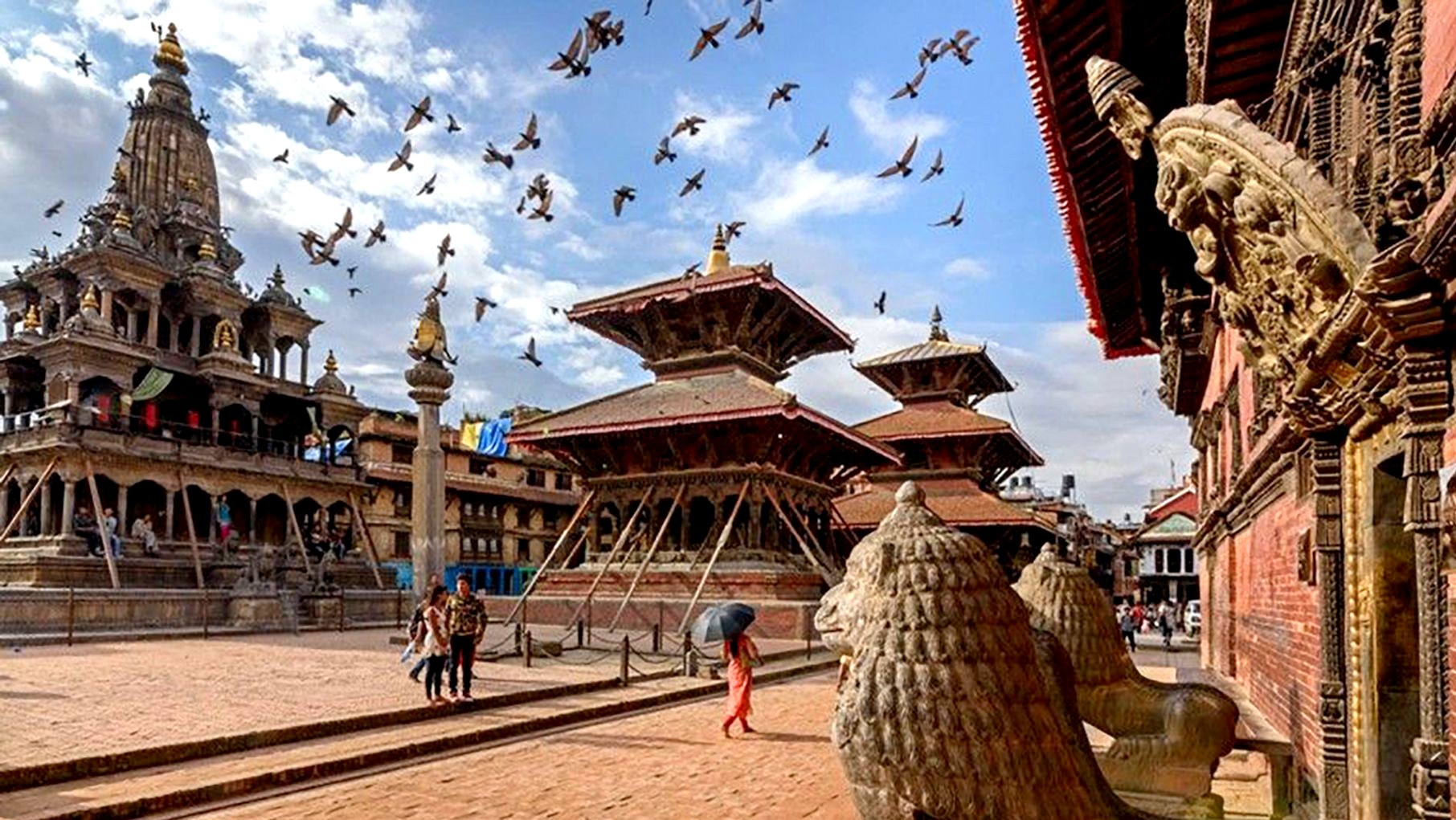
Bhaktapur Durbar Square
Bhaktapur, the 'City of Devotees', offers a more preserved slice of medieval Nepalese city life. Its Durbar Square is famous for its magnificent 55-Window Palace, Golden Gate, and the Lion's Gate. The Nyatapola Temple, standing tall at five stories, is another architectural marvel that dominates the skyline.

Swayambhunath Stupa
Known affectionately as the Monkey Temple due to the abundance of monkeys that reside there, Swayambhunath Stupa sits atop a hill overlooking the valley. This ancient religious complex is one of the oldest of its kind in Nepal, offering panoramic views, intricate carvings, and a mix of Hindu and Buddhist iconography.
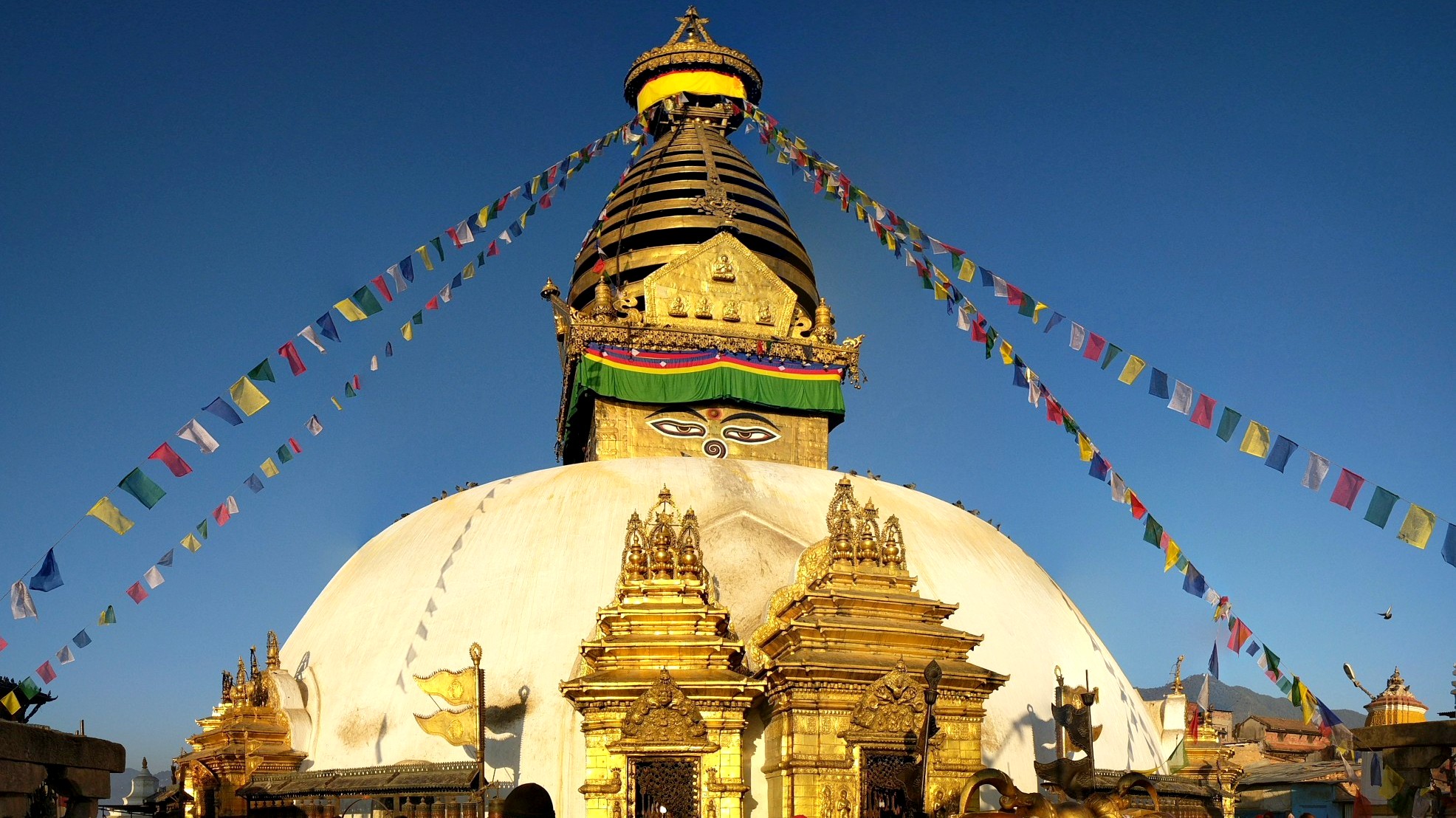
Boudhanath Stupa
Boudhanath is one of the largest stupas in the world and a vital center of Tibetan Buddhism in Nepal. The stupa is surrounded by monasteries and is a hub of prayer, meditation, and ceremonies, with the air filled with the scent of incense and the sounds of rotating prayer wheels.

Pashupatinath Temple
This sacred Hindu temple is dedicated to Lord Shiva and is located on the banks of the Bagmati River. Pashupatinath is a sprawling temple complex with a history stretching back over a millennium. It serves as a site of pilgrimage for devotees from all over the world and is also a key place for Hindu cremation ceremonies.
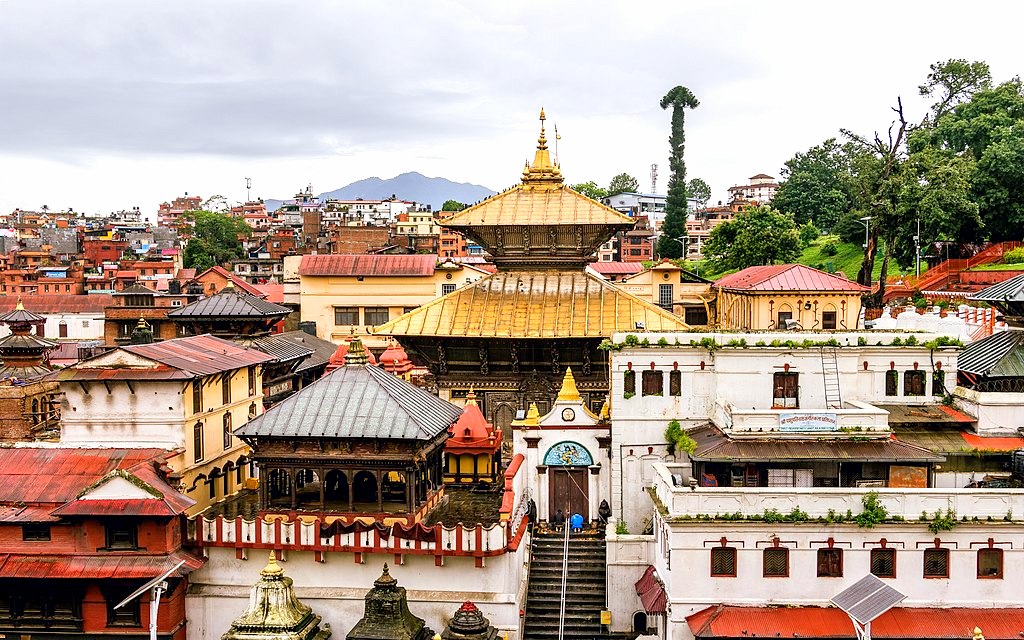
Changu Narayan Temple
Situated atop a hill in the Bhaktapur district, Changu Narayan is considered the oldest temple in Nepal, with origins dating back to the 4th century. The temple is dedicated to Lord Vishnu and is celebrated for its intricate wood and stone carvings that depict various incarnations of Vishnu.
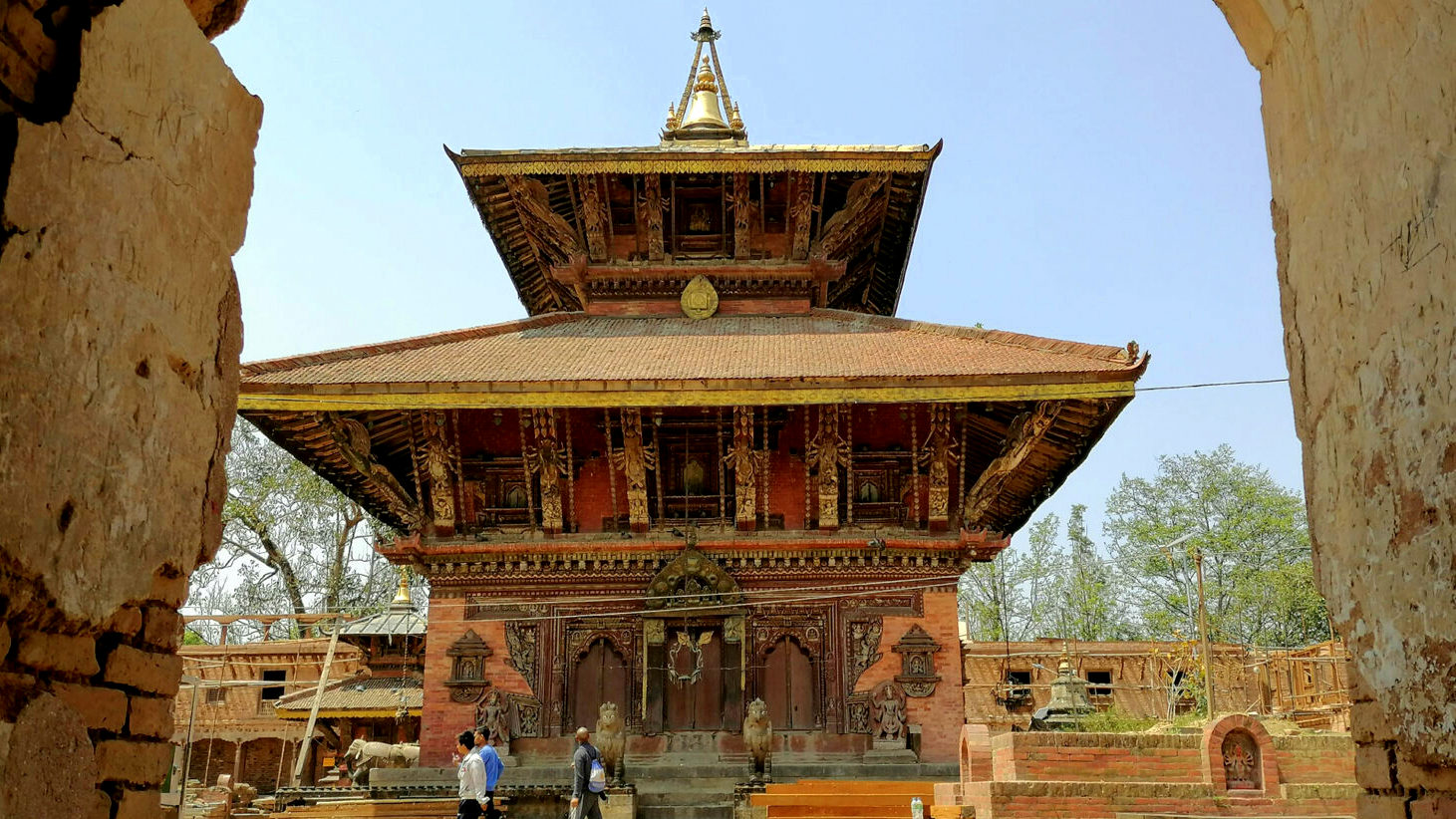
These cultural sites in the Kathmandu Valley are not only a testament to the architectural and artistic prowess of the Newar craftsmen but also a window into the spiritual and daily lives of the Nepalese people throughout history. Visiting these sites offers a profound insight into the blend of Hinduism and Buddhism that characterizes Nepalese culture, making it a unique and enriching experience for any traveler.
Birthplace of Buddha
The birthplace of Siddhartha Gautama, who later became known as Buddha, is Lumbini, a sacred site located in the Rupandehi District of Nepal. Recognized by UNESCO as a World Heritage Site, Lumbini is revered as one of the most important spiritual sites in the world. It's not just a pilgrimage destination for Buddhists but also a symbol of peace, enlightenment, and the quest for truth. Here’s an overview of what makes Lumbini so special:
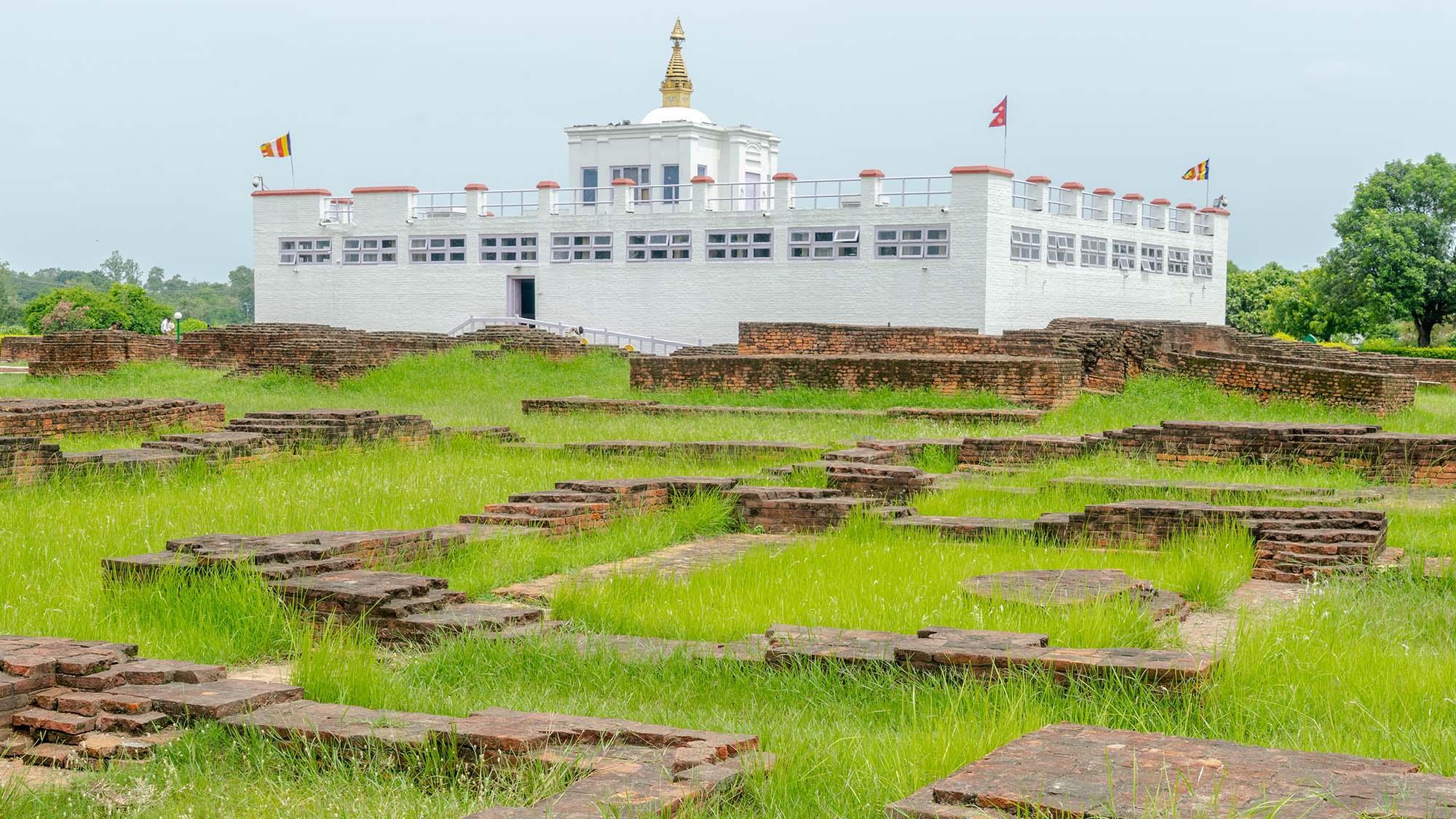
- Historical Significance: Lumbini's history dates back to 623 B.C. when Queen Mayadevi gave birth to Siddhartha Gautama in the Lumbini Garden. According to Buddhist texts, immediately after his birth, Siddhartha took seven steps and declared his quest for enlightenment. This momentous event has made Lumbini a focal point for Buddhist teachings and practices.
- The Sacred Garden: The heart of Lumbini is the Sacred Garden, which houses the ancient Marker Stone, the exact spot where Buddha was born. This area is marked by the Ashoka Pillar, erected by Emperor Ashoka in 249 B.C. to commemorate his pilgrimage to the holy site. The pillar bears an inscription that explicitly identifies Lumbini as the birthplace of the Buddha.
- Maya Devi Temple: Adjacent to the sacred pond where Queen Mayadevi is said to have taken a bath before giving birth, the Maya Devi Temple stands as a testament to the historical and religious significance of Lumbini. Excavations have revealed a series of ancient ruins, including the foundation of the temple and the Marker Stone, which indicates the precise birth spot of Buddha.
- Monastic Zone: Lumbini also features a Monastic Zone, divided into the East and West Monastic Zones. The East is dedicated to Theravada Buddhism, while the Mahayana and Vajrayana sects occupy the West. The zone is a serene area, with monasteries built by Buddhist communities from around the world, reflecting diverse architectural styles and traditions.
- The Lumbini International Research Institute: The Lumbini International Research Institute (LIRI) is dedicated to the study and research of Buddhism and its teachings. It houses a library and a museum with a vast collection of Buddhist texts, manuscripts, and artifacts, providing valuable insights into Buddhist history and culture.
- World Peace Pagoda: One of the many impressive structures within Lumbini, the World Peace Pagoda, stands as a monument to peace, unity, and the teachings of Buddha. Built by Japanese Buddhists, the pagoda is a striking symbol of Lumbini's mission to inspire harmony among all beings.
Lumbini is not just a historical site but a living representation of Buddha’s teachings on compassion, wisdom, and peace. It attracts pilgrims and visitors from around the globe, offering a tranquil space for meditation, reflection, and exploration of Buddhist philosophy. Whether you're a devout Buddhist, a student of history, or simply a traveler in search of peace, Lumbini offers a profound and moving experience that resonates with the essence of the human search for meaning and enlightenment.
Natural Heritage Sites
Nepal, with its dramatic landscapes and diverse ecosystems, is home to several UNESCO-listed Natural Heritage Sites. These sites are recognized for their outstanding universal value, showcasing some of the world's most stunning natural wonders and biodiversity hotspots. Here's a look at Nepal's UNESCO Natural Heritage Sites:
Sagarmatha National Park
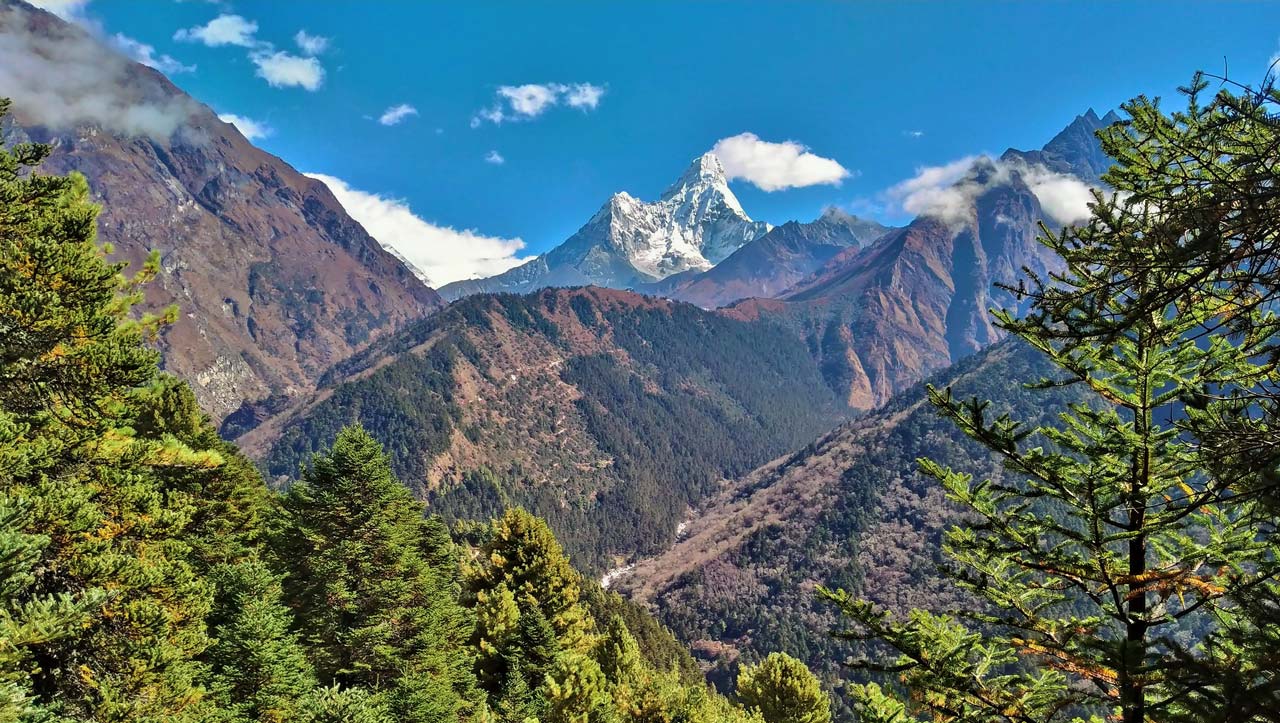
- Location: Northeastern Nepal, in the Solukhumbu District.
- Significance: Home to Mount Everest, the highest peak in the world, Sagarmatha National Park encompasses rugged terrain, deep gorges, glaciers, and giant rock formations. The park is renowned for its unique Himalayan flora and fauna, including the snow leopard, Himalayan tahr, and the red panda. It's also the homeland of the Sherpa people, who are known for their remarkable mountaineering skills and rich cultural heritage related to Tibetan Buddhism.
- Visitor Experiences: Trekking to Everest Base Camp, panoramic views from Kala Patthar, visiting Sherpa villages and monasteries.
Chitwan National Park
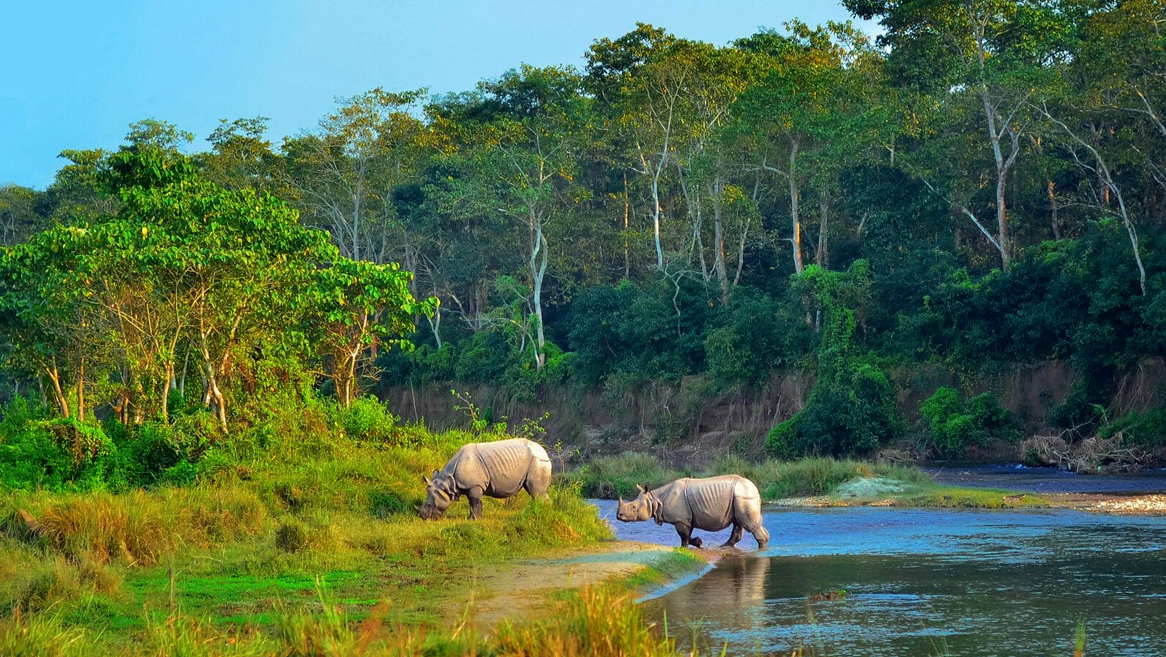
- Location: In the Terai lowlands of south-central Nepal.
- Significance: Chitwan National Park is one of Asia’s premier wildlife reserves and was among the first areas in Nepal to be declared a National Park in 1973. It's celebrated for its efforts in rhinoceros conservation and is also home to a sizable population of Bengal tigers. The park's diverse habitats, from dense forests to marshy grasslands, support a wide array of wildlife, including gharials (fish-eating crocodiles), elephants, and over 500 bird species.
- Visitor Experiences: Wildlife safaris on elephant back or in jeeps, canoe trips on the Rapti River, bird watching, and guided jungle walks.
These natural heritage sites are not only significant for their breathtaking beauty and biodiversity but also play a crucial role in conservation efforts and sustainable tourism in Nepal. They offer visitors an unparalleled opportunity to connect with nature, from the towering heights of the Himalayas to the lush, wildlife-rich lowlands of the Terai. By visiting these sites, tourists can contribute to the preservation of these precious ecosystems and the well-being of the local communities who live in harmony with nature.
Unique Experiences
exploring Nepal through its UNESCO World Heritage Sites is a journey that weaves together the threads of cultural immersion, adventure, relaxation, and an appreciation of art and architecture. This multifaceted experience offers something unique for every traveler, deeply enriching their understanding and appreciation of this beautiful country:
Cultural Immersion: Delving into the heart of Nepal's local communities provides a firsthand experience of the country's living traditions. Engaging with the local people, participating in their daily rituals, and enjoying the flavors of traditional Nepalese cuisine such as momos, dal bhat, and sel roti, allow visitors to experience the genuine warmth and hospitality of the Nepali culture. Witnessing ancient rituals and festivals, some of which have been celebrated for centuries, connects travelers to the deep spiritual roots and vibrant cultural tapestry of Nepal.
Adventure and Relaxation: Nepal's diverse landscape offers an unparalleled blend of adventure and tranquility. Trekking through the serene yet challenging trails of the Himalayas, including the paths that lead to Everest Base Camp or around the Annapurna Circuit, presents breathtaking vistas and thrilling experiences. Meanwhile, the lush jungles of Chitwan National Park offer a different kind of adventure with wildlife safaris. For moments of peace, the sacred gardens of Lumbini offer a perfect setting for meditation and reflection, surrounded by the profound legacy of Buddha.
Art and Architecture: Nepal's architectural grandeur and artistic heritage are displayed in the intricate carvings, stunning pagodas, and elaborate frescoes that adorn its temples and squares. The Kathmandu Valley alone is a showcase of architectural brilliance, with its Durbar Squares and centuries-old temples and stupas that reflect the skill and devotion of the Newar craftsmen. Each structure tells a story of faith, artistry, and the evolution of Nepalese culture, providing an immersive educational experience for visitors.
Embarking on the UNESCO World Heritage Sites Tour in Nepal is an invitation to explore the depths of human creativity, spirituality, and the enduring relationship between nature and culture. It's a journey that not only unveils the majestic beauty of Nepal but also instills a profound respect and appreciation for the natural and cultural heritage that defines this remarkable country. Through this immersive experience, travelers carry home not just memories but a deepened understanding of the world's shared heritage.
Best Time of the Year to explore UNESCO World Heritage Sites Tour in Nepal
The best time of the year to explore UNESCO World Heritage Sites in Nepal largely depends on the weather and climate, which vary significantly across this geographically diverse country. Generally, the most favorable times for touring Nepal's cultural landmarks and natural wonders are during the spring and autumn seasons. Each period offers distinct advantages for visitors:
Spring (March to May)
Spring is a fantastic season for exploring both the cultural and natural UNESCO sites in Nepal. The weather is warm and pleasant, with temperatures ranging from mild to moderately hot across different parts of the country, making it comfortable for sightseeing and outdoor activities.
Advantages:
- The landscapes are vibrant with blooming flowers, especially rhododendrons, Nepal's national flower, which paints the hills in bright colors.
- Visibility is good, offering clear views of the Himalayan peaks, which is perfect for photography enthusiasts.
- Wildlife in Chitwan and Sagarmatha National Parks is more active and visible, enhancing the safari experience.
Autumn (September to November)
Autumn is another prime time for visiting Nepal, as the monsoon rains have ended, leaving the air clean and the skies clear. This season is particularly popular for trekking, but it's also an excellent time for cultural tours.
Advantages:
- The weather is stable and cool, ideal for long walks and hikes around the heritage sites without the discomfort of the summer heat or the winter cold.
- The post-monsoon season means clearer skies and the best visibility of the year, offering spectacular views of the mountains.
- This period includes several major festivals, such as Dashain and Tihar, providing travelers with an opportunity to experience Nepal's rich cultural festivities and traditions.
Other Considerations
- Monsoon Season (June to August): Although the monsoon season brings lush greenery and revitalizes the landscapes, it's less ideal for touring due to heavy rains, which can cause travel disruptions and obscure mountain views.
- Winter (December to February): Winter can be a good time to visit the cultural sites of the Kathmandu Valley and the Terai region, as the weather is cooler and less crowded. However, higher altitude areas and mountainous regions can be very cold, and some trails may be inaccessible due to snow.
Ultimately, the best time for a UNESCO World Heritage Sites Tour in Nepal is during spring and autumn, when the weather conditions are most favorable for a wide range of activities, from cultural exploration to adventure treks. These seasons offer the best blend of comfortable climate, natural beauty, and cultural engagement, making them the ideal times to experience the full majesty of Nepal's heritage.
Important Notes for doing the UNESCO World Heritage Sites Tour in Nepal
Embarking on a UNESCO World Heritage Sites Tour in Nepal is an enriching experience that requires some preparation to ensure you make the most of your visit. Here are important notes to consider:
Acclimatize and Prepare for Altitude: If your tour includes high-altitude destinations like Sagarmatha National Park, it's crucial to acclimatize properly to prevent altitude sickness. Plan for gradual ascents and incorporate rest days into your itinerary.
Respect Cultural Norms: Nepal has a rich tapestry of cultures and traditions. Dress modestly, especially when visiting temples and monasteries. Always ask permission before taking photos of people or religious ceremonies.
Stay Informed About Permits: Certain areas, especially those in national parks or conservation areas, require permits for entry. Ensure you have all necessary permits arranged in advance to avoid any legal issues.
Travel Insurance: Opt for comprehensive travel insurance that covers high-altitude trekking (if applicable), medical evacuation, and any adventure activities you plan to undertake.
Health Precautions: Consult with a travel health specialist before departure for vaccinations and health advice. Drink only bottled or treated water and practice good hygiene to avoid stomach ailments.
Be Prepared for Varied Climate Conditions: Nepal’s weather can be unpredictable, especially in mountainous regions. Pack layers to accommodate a wide range of temperatures, and don’t forget waterproof gear for rain-prone seasons.
Support Local Economy: Where possible, support local businesses by purchasing local handicrafts, eating at local restaurants, and hiring local guides. It enriches your travel experience and contributes to the community.
Leave No Trace: Be mindful of your environmental impact. Dispose of waste properly, minimize plastic use, and respect wildlife and natural resources. The principle of "Leave No Trace" is crucial in preserving these sites for future generations.
Plan Your Itinerary Wisely: UNESCO sites in Nepal vary from cultural landmarks in urban areas to natural sites in remote locations. Consider travel time and logistics between different sites when planning your itinerary.
Stay Flexible: Despite careful planning, travel in Nepal can sometimes be unpredictable due to weather conditions, festivals, or strikes. Maintain flexibility in your schedule and be prepared to adjust your plans as needed.
Engage with Locals and Learn: Take the opportunity to engage with local communities and learn from them. Many sites, especially in the Kathmandu Valley, have local guides who can provide deeper insights into the history and significance of the sites.
By keeping these notes in mind, you’ll be better prepared to embark on a meaningful and respectful journey through Nepal’s UNESCO World Heritage Sites, ensuring a memorable experience that respects both the natural environment and the cultural heritage of this beautiful country.
UNESCO World Heritage Sites Tour in Nepal is more than just a journey through scenic landscapes and historic locations; it's a profound exploration of the heart and soul of a country steeped in spiritual depth, cultural richness, and natural beauty. From the architectural wonders and vibrant ceremonies of the Kathmandu Valley to the serene, spiritual ambiance of Lumbini, and the breathtaking natural realms of Sagarmatha and Chitwan National Parks, Nepal offers a mosaic of experiences that cater to the adventurer, the peace seeker, and the culture enthusiast alike. This tour not only unveils the majestic beauty and diverse heritage of Nepal but also instills a deep appreciation for the intricate tapestry of human and natural history that has shaped this remarkable land. As travelers immerse themselves in the unique experiences and connect with the essence of Nepal's UNESCO sites, they carry back not just memories but a piece of Nepal's enduring legacy, making the UNESCO World Heritage Sites Tour in Nepal an unforgettable journey of discovery and enlightenment.
FAQs of the UNESCO World Heritage Sites Tour in Nepal
Q: What are the UNESCO World Heritage Sites in Nepal?
A: Nepal is home to several UNESCO World Heritage Sites, categorized into cultural and natural sites. Cultural sites include the Kathmandu Valley (comprising seven different locations: Swayambhunath, Pashupatinath, Boudhanath, Patan Durbar Square, Bhaktapur Durbar Square, Kathmandu Durbar Square, and Changu Narayan), and Lumbini, the birthplace of Buddha. The natural sites are Sagarmatha National Park and Chitwan National Park.
Q: When is the best time to visit these UNESCO sites in Nepal?
A: The best times to visit are during the spring (March to May) and autumn (September to November) seasons. These periods offer the most favorable weather conditions for exploring both cultural and natural sites, with clear skies and moderate temperatures.
Q: Do I need any permits to visit these sites?
A: Yes, some sites, especially the natural parks (Sagarmatha and Chitwan), require entry permits. Additionally, specific cultural sites within the Kathmandu Valley may charge entry fees. It’s best to check the latest requirements and arrange your permits in advance.
Q: How accessible are the UNESCO World Heritage Sites in Nepal?
A: The cultural sites in the Kathmandu Valley and Lumbini are easily accessible by road. Natural sites like Sagarmatha and Chitwan National Parks are accessible via road and, in some cases, by short domestic flights, followed by local transportation options. Some remote areas might require trekking to reach.
Q: What should I pack for a UNESCO World Heritage Sites Tour in Nepal?
A: Packing depends on the season and the nature of your visit. Generally, bring comfortable walking shoes, weather-appropriate clothing (layers for cold, breathable fabrics for warm weather), rain gear, a sun hat, sunscreen, a water bottle, and personal medications. For high-altitude sites, altitude sickness medication and thermal clothing are recommended.
Q: Are there guided tours available for these UNESCO sites?
A: Yes, numerous tour operators in Nepal offer guided tours to these UNESCO World Heritage Sites, ranging from day trips to extended multi-day tours that cover several sites. These tours often include expert guides who provide valuable insights into the historical, cultural, and natural significance of the sites.
Q: Can I visit all UNESCO sites in Nepal within a week?
A: While it is possible to visit the main cultural sites in the Kathmandu Valley and Lumbini within a week, fully experiencing the natural sites like Sagarmatha and Chitwan National Parks would require additional time due to their vastness and the activities they offer. A more extended trip is recommended for a comprehensive experience.
Q: What cultural etiquette should I follow when visiting these sites?
A: Respect local customs and traditions. Dress modestly, especially at religious sites; always ask permission before taking photographs of people or religious ceremonies; and remove your shoes before entering temples and certain buildings.
Q: Is it safe to travel to these UNESCO sites?
A: Yes, it is generally safe to travel to these UNESCO World Heritage Sites in Nepal. However, it's always wise to follow local advice, stay updated on travel advisories, and hire reputable guides, especially for trekking in remote areas or natural parks.
Q: How can I contribute to the preservation of these UNESCO sites?
A: Visitors can contribute by following the principle of "Leave No Trace," respecting site rules and guidelines, avoiding single-use plastics, supporting local economies through the purchase of sustainable souvenirs, and choosing eco-friendly accommodations and tour operators.
If you need any further information, please contact us by email: at [email protected], Phone: at +977- 985 100 5129 (WhatsApp)




